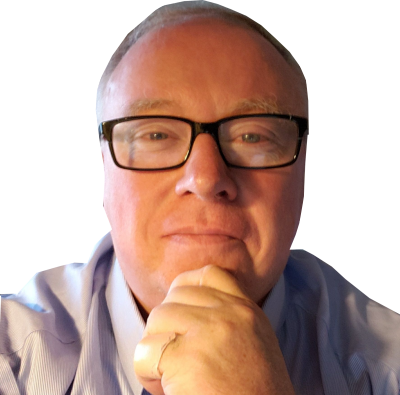Coming out of Ohio State in the mid-eighties, I felt ready and able to teach. And I did, for fourteen years: middle school humanities, elementary self-contained, and district gifted coordinator. My favorite memories are of teaching the youngest students in the primary grades. They are burgeoning with curiosity and excitement; full to the brim with human potential! I was named my district’s teacher of the year in 1989 teaching Kindergarten, where my students sang, danced, learned to read, count change and learn the power of story.
Along the way technology arrived in schools, and with it opportunities to acquire new tools and the skills to use them in the classroom. I saw it as new pathways to human potential, and with Howard Gardner’s multiple intelligences theory already informing my teaching, the coupling with ed tech took student learning to new heights. Next thing I knew I was a district professional development leader, sharing what I was doing in my classroom with colleagues. One particular teacher was so pleased with my sessions, she commended me to her husband, and I was offered a job as a technology training specialist at he Department of Housing and Urban Development in Washington DC, designing and presenting sessions on using technology applications at headquarters and at field offices around the country.
The work was good, but my kids were young and I didn’t want to travel as often as the job required. So when the opportunity came to serve as an instructional technology coordinator in Arlington, Virginia schools, I made the transition back into public education. Doors continued to open outside the classroom, and while I had been presenting on the Classroom Connect conference circuit for several years, I was offered the opportunity to help launch its online course division, Connected University. As a course developer, instructor and department chair, I applied my knowledge of learning and multiple intelligences applications in virtual learning environments for adults, not only through Classroom Connect, but also through the University of Mary Washington and Pepperdine University. As each door opened, I was gratified with all the ways the work was unlocking untapped human potential in everyone involved.
Eventually I felt I had plateaued in the impact I was having in Arlington and online, and I started a search to return back home to Massachusetts landing an administrative position. Surely, by moving up in the hierarchy, I could affect more change in how teachers teach and students learn. First in Salem city schools and then in the Northborough-Southborough regional school district, I brought my experience and aspirations to leading district technology departments. I made appreciable progress in finding answers to my questions, but I still felt handcuffed with school technology being an add-on, a nice-to-have, and a budget hog. So when my friends and former colleagues from Arlington, Virginia started contacting me, asking me to apply for the newly-created assistant superintendency there, I was torn. I was so happy to be home, but leading technology at that level could provide me with the wherewithal I was still looking for to truly unlock the potential of technology and the humans who use it. In the end, I chose to return to Arlington.
Long story short, my questions were answered. The higher I went in district leadership, the farther I was away from classrooms and students and learning, and the more I encountered new, unanticipated obstacles, even in a well-funded, high-profile district like Arlington. So when a new door eventually opened to come to ASCD, I chose to make the move. I knew I was not interested in being a superintendent, and after 25 years in public education, I sought to find new ways to have impact in the profession.
For the last fourteen years I have dedicated myself to ASCD's Affiliates, Connected Communities, Professional Interest Communities, Student Chapters and Emerging Leaders, and launching a new Champions in Education program for mid-career educators. Each of these programs worked with practitioners in the field who are highly committed to the work of the organization. I loved this role, though it wasn't without its challenges. The recession wasn't kind to membership organizations, but in shoring up and growing the groups in my charge, ASCD was able to withstand the sputtering economy while other associations were closing their doors or merging interests to survive. The legacy of ASCD shall always be as the standard-bearer of excellence in educator professional learning, and it was the commitment of our membership that made it so. That legacy lives on so long as we continue to empower the professionals who serve students worldwide with quality content and a commitment to the Whole Child.
Of equal importance, ASCD was a learning organization, allowing me to continue to grow throughout my tenure there. If I'm not developing my own potential, how can I effectively help others to develop theirs? And so in retirement I continue to strive to support the growth and impact of educators. Here’s to continued growth and learning for all of us, using all our intelligences, with all kinds of new and yet-to-be-realized technologies, connections and collaborations. There’s so much more we can accomplish together!



